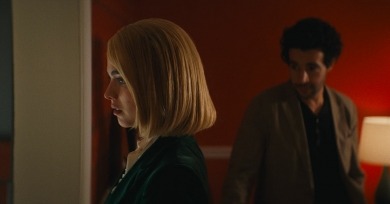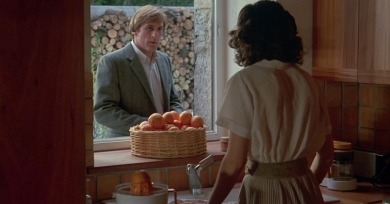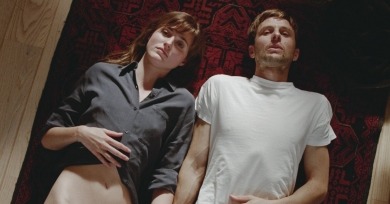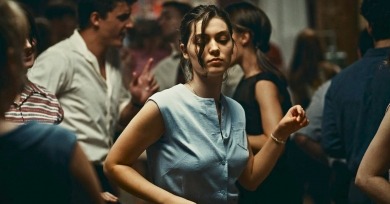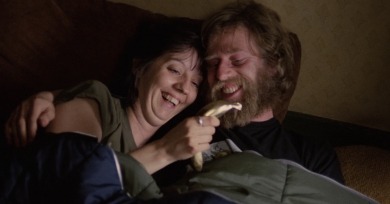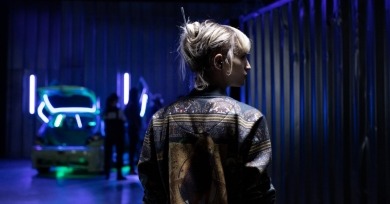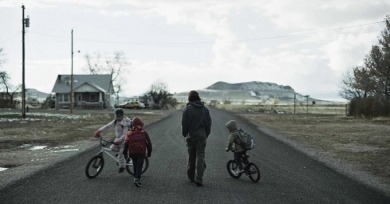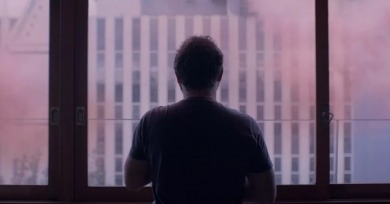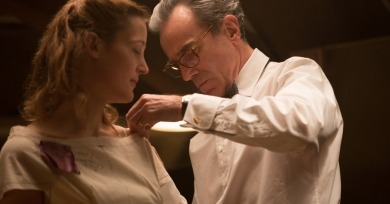Susannah Gruder
They both want the relationship to continue, not simply for financial or sexual reasons, but, as it becomes clear, because of things far more significant, and far more connected to their inner selves than their outer circumstances.
Full Time is largely about the labor that continues in the shadows of a labor strike, and the non-union workers living outside Paris whose lives are overturned when the city shuts down. Julie is not a Norma Rae-esque heroine interested in organizing for the greater good; she is just trying to keep herself and her family afloat.
The film is bolstered chiefly by the cast of nonprofessional actors, who together form an entirely authentic unit, feeding off one another’s energy for better or worse.
When his suburban melodrama The Woman Next Door was released in 1981, Truffaut was, in many respects, getting back into his stride.
Time is in many ways the subject of Petite Maman, which opens with the ticking of a clock, suggesting the childlike domain of Fanny and Alexander, a film that likewise tries to understand the mysteries of adulthood through a child’s eyes.
The film is a richly layered look at the conflicting longings and impulses of early adulthood, the cinematic equivalent to a bittersweet love song that also happens to be catchy as hell.
Viewers watching this year’s Sundance films are being asked to interrogate their ways of seeing, coming up against films that examine perspective by more thoroughly investigating the relationship between who’s behind the camera and what we see on screen.
Valerie’s brass banana is an attempt to accumulate objects she hopes will add something, a bit of her own personality, to her tacky abode. Instead, its shiny surface only reflects her image back at her, an endless loop of bourgeois emptiness.
Ducournau’s latest film starts out hard but strips itself down to a level of softness and sentimentality, examining the armors we establish to shield ourselves from the world, and what it takes to transmute our steely exteriors into something more malleable.
An older woman walks along Steinway Street in Astoria with a strong sense of purpose. She is shot by an unknown cameraperson who wields his lens like a sniper, tracking her as she moves. The woman periodically stops men on the sidewalk, earnestly asking benign questions that quickly becoming intensely personal.
The filmmaker embraces the emptiness of the landscape. You can sense that David is traversing the same street back and forth, a dead-end town stretching out until oblivion. The muted palette only adds to the sense of simplicity, giving us license to color the narrative with our own readings.
In their ambivalence and open-endedness, these films paradoxically brought me closer to a kind of emotional release than any other films in the festival, managing to capture our current state of uninterrupted dread and malaise in a way that feels comfortingly familiar.
While her emotional world remains hidden to us, we nonetheless feel an intimacy with Yana as she nestles herself into the vastness of her environment.
In the spirit of films like the Chantal Akerman documentary No Home Movie and I Go Gaga, My Dear, by Naoko Nobutomo, Johnson tries to capture him on camera to come to terms with his eventual disappearance, while also somehow keeping him alive.
The corrections center actually functions as a reprieve for many of these women, who went from abusive childhoods straight into abusive marriages when they were as young as 12. The fact that a male filmmaker is let into this world shows their trust of him.
There is that split-second of darkness. In the cinema, it comes between the last trailer and the film you came for. In the theater, just after the house lights dim completely. It is a feeling of being on the threshold of something unknowable.
On the delight of "unglamorous isolation," the revitalizing energy of two iconic movie stars, and the power of a great entrance.
For Eborn, the focus of Transnistra is more personal than political. “My work begins next to the character,” she said. “There’s a world around them that’s potent, it’s alive somehow. The inspiration comes from this person.”
The revolt that Alma initiates can be read as Anderson’s response to cinematic texts like Rebecca and Vertigo—what might have transpired if Madeleine hadn’t let Scottie use clothing as a weapon to exert control. Phantom Thread is what happens when the mannequin comes to life.
While I tend to chafe at categorizing directors based on gender, each of these films is richer as a result of their lived experience as women, and the particular struggle of searching for agency in a world that limits it.
